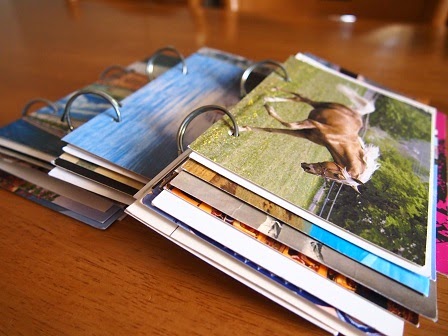I've been wondering for awhile now about what to do with all the Postcrossing postcards I've had stashed away in the cupboard.
I really didn't want to lose any, but I am beyond wanting a "postcard wall" or anything along those lines. What I wanted was a means by which I could store the cards without having to worry about them getting lost or damaged, ensuring their longevity, but still allowed them to be viewed.
Initially, I thought a solution may be to put them into a photo album or journal, but upon investigating this option, I realised that photo albums can be quite expensive, and I didn't want to spend a lot of money on this project, nor was I overly keen on the album designs. It soon dawned on me that if I were to use albums, the backside of the postcards, where the senders have written their messages, wouldn't be visible.
Then last weekend I was cleaning out some drawers when I came across an abundance of old curtain rings. These were left here by the previous owners (perhaps even the owners before them) for the large, heavy drapes they had at the windows. But since we have removed and replaced those with simple lace curtains, we've not had a need for the rings.
That is, until now!
I realised pretty much immediately that I could put those rings to use and make booklets out of my Postcrossing postcards, binding them together in a way that will prevent any from getting lost, whilst still displaying both sides of the cards.
It's so quick, easy and inexpensive (even if I'd had to purchase the rings, it would still have been cheaper than photo albums) that I thought I'd share the process, in the event that anyone wants to do the same thing.
First, collate your cards and put them in order. I found that 30 cards per booklet was a good number, as it makes it comfortable to flip through the cards once they've been bound.
Then using a two-ring hole-punch, punch your cards. I like to stagger the positioning of the holes, so the cards are in a slightly different place within the booklet. This makes the booklet feel sturdy.
Once you've punched holes in all your cards, feed the rings through the holes, one card at a time (as pictured above), starting with the last/bottom card first and working your way to the first/top card (one placed on top of the other).
Once all cards are on the rings, you should have a neat little booklet that hasn't cost a fortune to make, and allows yourself (and others) to browse at leisure, without having to worry about losing or damaging the cards.











It's a good idea. I'm making a travel notebook with the same system.
ReplyDelete